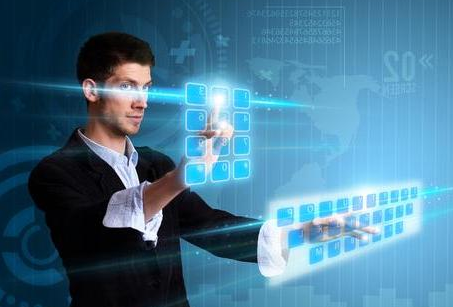As an IT guy, it’s probably no surprise that I enjoy watching sci-fi. It’s shows like Star Trek, Back to the Future and even the Jetsons for the youngest viewers that feed our imaginations and challenge us to think about all the possibilities that technology can provide in the future.
Many of the top science fiction movies have been so spot-on in predicting future technology. Take Back to the Future II. In 1989, the movie painted a picture of what the future would be in 2015. Watch the movie and you’ll discover that much of the technology that seemed so futuristic and even sometimes crazy back then has become a reality.
Even McFly’s self-lacing tennis shoes are expected to be unveiled by Nike later this year. It’s likely more of a nod to the movie (which we will see a lot of this year) than a fashion trend. Newsweek recently published Back to the Future sketches that never made the big screen because they seemed “too far-fetched.” Yes, many of those also have come to fruition.
Remember how futuristic Star Trek seemed? Star Trek has been arguably the best at predicting future technologies. From videophones and other wearables to 3D printers and voice recognition, some of the most iconic Star Trek technology is used in business today.
The lesson: We are way farther ahead than we imagined, and the next 25 years will blow our minds and completely transform how we do business. Get ready.
Here’s a look at a few futuristic technologies from Doc, Spock and the Jetsons that we have yet to see:
- Teleporter: “Beam me up, Scotty” has yet to become a part of our vocabulary, but advancements in telepresence video technology will soon get us close to teleportation than we ever imagined. This still seems far-fetched. But give it 15-25 years and I am sure we will come up with something even better to really make our world flat for business.
- Flying cars: We have self-driving cars and it’s been estimated that they will account for 40 percent of travel for the average person. Flying cars are still hypothetical and not expected to be ready even by 2030.
- Food printer: The Jetsons had a machine producing their food. That has yet to make it into any homes, but it won’t be long. It is predicted that 90 percent of restaurants will use some form of 3D printing to produce food by 2030.
- Cleaning robots: The Roomba and other robotic vacuums already are automatically cleaning homes while their owners are away at work. Now if we only can get them to clean toilets. Robot maids, like Rosie in the Jetsons, likely will take over the cleaning duties in workplaces in the near future.
We are moving quickly toward a world where everything is connected and communicating. That will change how we complete so many daily tasks. The supply cabinet will automatically send orders to vendors when items get low. We already do that with print toner for our Managed Print customers at Marco. Coffee begins brewing when the first car pulls in the parking lot in the morning. A printer automatically reviews, prints and organizes documents needed for meetings that day. The presentation you’re giving that afternoon automatically appears on the screen before you walk in the conference room.
The chain reactions will be what really revolutionize our offices. Take lunch. We order that for meetings so often at our office and it can be time consuming. Imagine that a refrigerator synced with the company’s calendar identifies that a business meeting is taking place over lunch, recognizes a need for more beverages and has them ordered and delivered. Then on that day, it automatically orders the favorite meals of the attendees and then sends the calorie intake to the mobile devices of each attendee.
It’s been said that by 2030, predicting the future will become an exact science. What’s the fun in that?